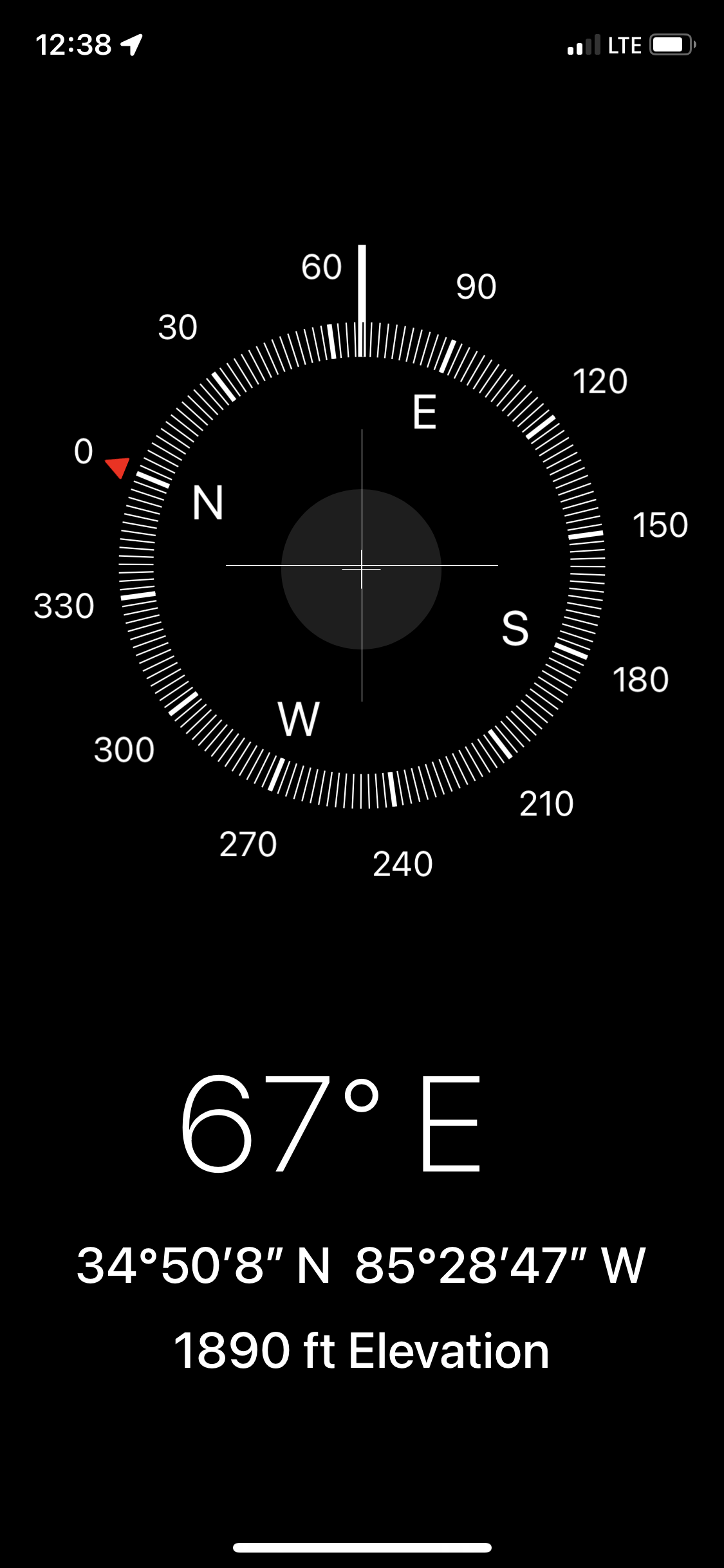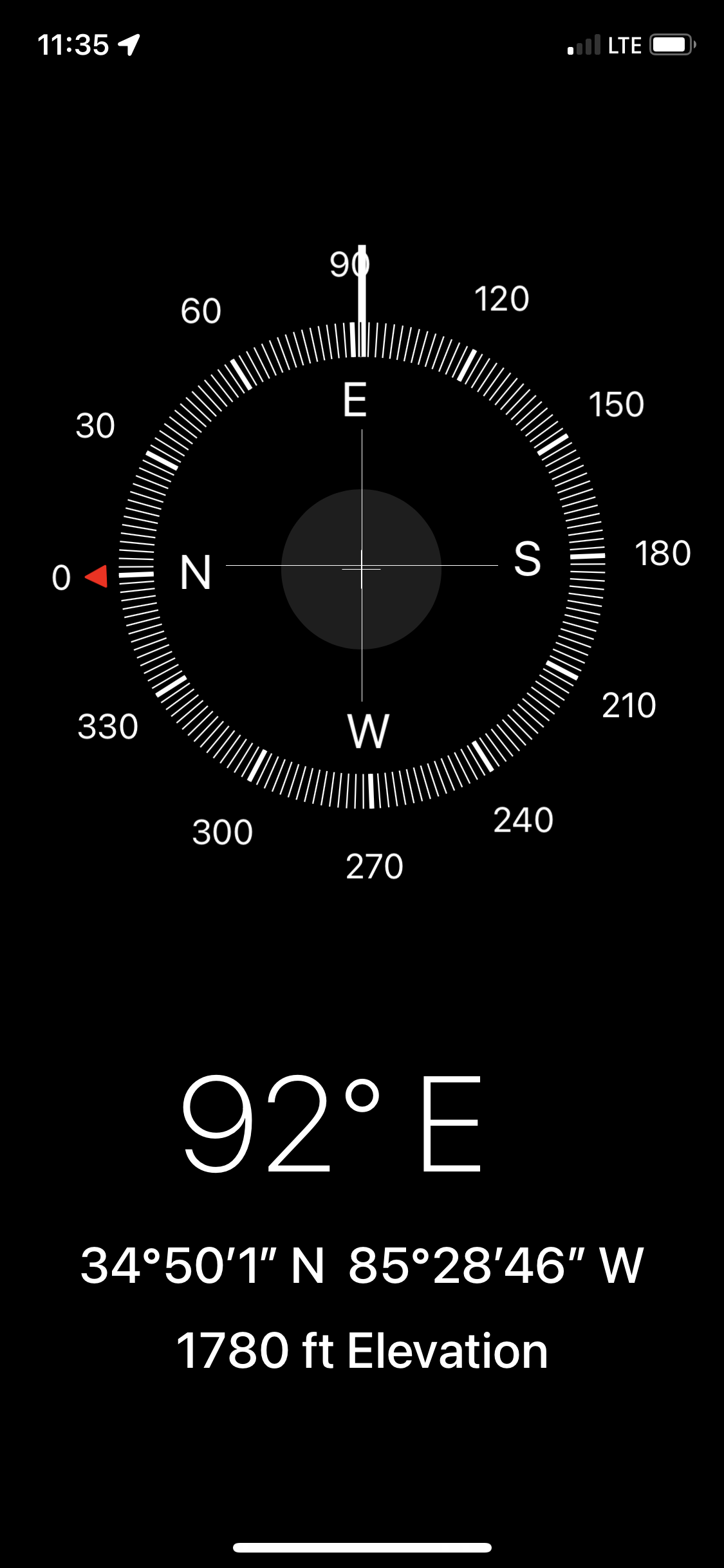The first picture is one of the main reasons I like POTA. Being out in the field with a portable radio and being able to make a reliable contact with it is just special to me.
The parking lot was almost full when I arrived and fortunately for me, the space I wanted was open! That is me all the way over to the left at the end of the row. The perfect spot to be if others are in the lot as there is no trail here so no one will be tripping over the antenna parts when the come and go.
Today I found I had about an hour of free time and the weather was perfect for a change so I gathered up the gear and went to K-2169 for a quick activation. Since the weather was so nice I opted to setup on the tailgate.
When I operate at home, I am in my “shack” which is actually a spare bedroom I have repurposed for my hobbies. That is the one thing I like and don’t like about it. It is indoors. I like it when it is raining or cold outside but I don’t like it when it’s nice weather outside. This is the biggest reason I like going to Field Day in June, that is second only to the camaraderie with the other people.
Today, since I wasn’t in my regular truck (I commandeered one of my shop trucks while they put new shoes on the dodge) I didnt have my usual antenna kit. So today I deployed the 41’ random wire antenna that I used in Hawaii. I also coupled it to my Icom IC-705 with the automatic antenna tuner as well. This makes band changes a breeze…
I threw a line over a tree beside the truck and pulled the wire up as high as I could and tied on a 13’ counterpoise. The tuner connects to the radio with two cables, a co-ax transmission line and a signal/control cable that is simple a 3.5mm stereo cable commonly referred to as a “AUX” cable. It has two AA batteries in it and works fine with these but if possible I will power it with the main battery I feed the radio with, so I also included a power cable in my harness I made up for it. This harness is 6’ long and allows me to connect random wires right to the tuner.
To lift the burden of the wire tension off of the tuner, I also have a small cord connected to the radio end of the 41’ wire so I can anchor it to something near the tuner. This works really well and keeps me from pulling the tuner off the table when something moves the wire like wind, squirrels or people which in turn would cause damage to my tuner.
Today was a pretty good day too, I got my activation in a fairly short amount of time, I was outside in the wonderful weather and I was able to just play radio a little while. That being said, I netted less than 20 QSOs today with signal reports showing I was not very strong…probably because the wire was poorly deployed and not even all the way.
The key of choice today was once again the Gemini I picked up off of eBay a while back. I have ran into two problems with it since getting it. I also use it a lot as it has a great feel and normally works very well. Issue number one is detailed in a previous blog post where I bumped the lever arms at some point and this shifted the action off center causing it to send dits nonstop. I dismantled the key and realigned the lever arms, which is really easy once you see what needs to be done. The second happened just the other day during an activation. I got all setup and started to call QRL and it was just sending trash. I couldn’t get it to send anything correctly at all, just a mess of dits and dahs with no coherent outcome. So I fell on the backup, the N6ARA key and it saved the day. Once back home, I took the key apart to find that the center ground post that the contacts touch when keying, had worked loose and it was about to fall out. It has one small screw that holds it on the base plate and I simply tightened this screw and it was back in business. The lesson here is to have a spare key with you…fortunately I had one and was able to get the activation.
Looking at the map, we can see how the radiation pattern started about 700 miles away probably due to my terrible antenna deployment, but people were still able to hear me so that is all that mattered. lol…
Do you have any tales from the outer planets that relate to anything like what has happened here? If so, let me know in the comments. I look forward to working all of you on the air at some point.
72 de WK4DS


























